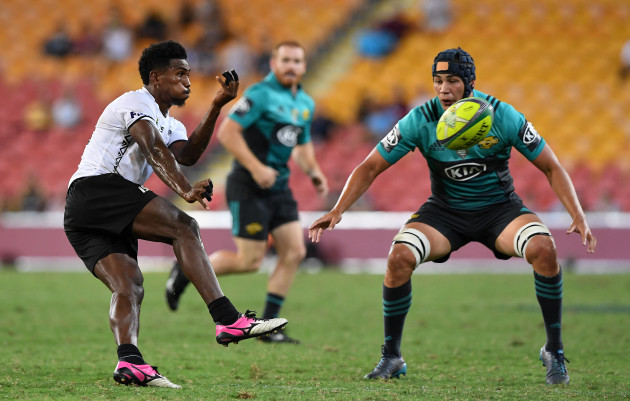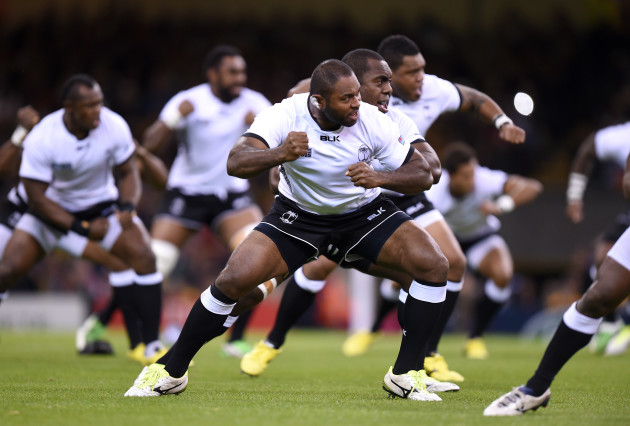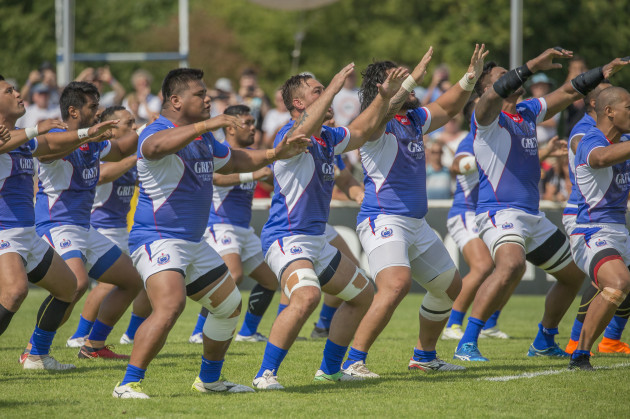WHEN FIJI BEAT France in Paris last November – their first-ever win against les Bleus and arguably their best result in Test rugby – scrum-half Frank Lomani was one of the stars of the show.
Rewind to March of last year and Lomani was standing out as the best player at the Pacific Combine, a week-long camp run by World Rugby with the aim of helping Pacific Island players towards Test rugby.
Lomani also had two seasons with the Fijian Drua behind him, helping the side to win Australia’s National Rugby Championship in 2018.
The Fijian Drua is another World Rugby project, the club being funded largely by rugby’s governing body, again with the aim of giving local talent a pathway towards Test level.
Lomani is among several success stories from both projects, which fall under the remit of the ‘High Performance’ branch of World Rugby, of which Sydney man Peter Horne is general manager.
“We’ve got a number of performance targets but our goal is to get a Tier 2 nation into the World Cup quarter-finals, reduce losing margins, decrease infringements and improve the over-arching performance of those teams,” explains Horne of his job.
The World Cup generates around 90% of World Rugby’s income so it’s obvious that a more competitive tournament will generate more of that income, which can be fed back into the development of the game.
Horne oversees the work being done with 24 emerging or ‘Tier 2′ nations around the world, with 14 special projects currently in operation – the Pacific Combine and the Fijian Drua being two of them.
The Drua – a three-way initiative between major investor World Rugby, the Fiji Rugby Union and the Fijian government – have been a roaring success so far.
Launched as recently as 2017, the Drua lifted the National Rugby Championship in Australia last year and have already been developing Test players.
Indeed, seven players from the Drua were part of the Flying Fijians’ matchday 23 in the win over France in November, while 13 Drua players featured in the hammering of Uruguay a week before.
“I reckon the Australians would like to get their trophy back!” jokes Horne when asked about the Drua.
“It’s arguably the first time a pro team has been created for a pathway fit because there’s a problem with a lot of Tier 2 unions that don’t have access to the professional game unless they export talent.
“By creating the Fijian Drua, it fills a pathway hole so talented players aren’t going from local domestic club rugby straight into international rugby or European clubs or Super Rugby.
“The ability to retain talent over time is important. It holds players at home for longer.”
World Rugby, which has a ‘Pacific Working Group’ to help develop the Pacific Island nations, launched the Pacific Combine last year and, again, rates it as a success that is only getting started.
The combine takes in the best U23 players from Fiji, Tonga and Samoa, with the talent being identified in the World Rugby Pacific Challenge competition, which sees the Pacific Islands’ A teams play against each other and Japan every year.
Crucially, the Pacific Challenge captures the eligibility of the players involved, meaning young Fijians, Samoans or Tongans can’t later go on to represent another country.
“The Pacific Challenge pushes the unions to look deeper into their talent pool to capture the eligibility of players earlier,” says Horne.
“The idea of the Combine is to then provide opportunities, grow and develop the player, and put them in the right club environment so they get better and when they do play for the national team, the national team gets better too.”
The second version of the combine took place in Suva, Fiji in March, with England attack coach Scott Wisemantel overseeing it for the second year in a row, assisted by former Waratahs head coach Chris Hickey.
It’s an intense week-long camp, with the Pacific Islands A teams’ head coaches also brought in to further their development.
The players are brought through a busy schedule of physical and skill assessments, training sessions on-pitch and in the gym, sports psychology sessions, nutritional education and more.
Pacific Rugby Players, the players’ association in the region, also give talks on non-rugby things like financial management, contracting and social media.
The week ends with a game against a local club, with this year’s particularly young Combine crop narrowly losing to a side from Fiji’s provincial Skipper Cup.
Of the 30 players involved in the first year of the combine, six were directly placed into professional clubs, with Lomani going to the Melbourne Rebels and five other players signing with Mitre 10 Cup teams in New Zealand.
Lomani did return to the Drua after his stint in Melbourne but learned plenty from Will Genia at the Rebels and subsequently turned down an offer from Wasps to remain in Fiji ahead of the World Cup.
“It’s fantastic to see the evolution of opportunity for a kid who has gone from the combine into a pro environment into another pro environment into Test rugby,” says Horne.
All in all, 16 of the players from last year’s combine have ended up contracted, some in the Mitre 10 Cup, some with the Drua, and second row Tevita Ratuva securing a deal with Top 14 club Bordeaux Begles.
This year’s combine involved 26 players and there are hopes that many of them will also be contracted in Fiji, New Zealand, Australia and Europe in the coming months.
But Horne explains that World Rugby aren’t looking to just place these talented Pacific Islanders in any club that will take them. The right environment is key.
“In the past, you’ve had a lot of exported players going into the wrong environments. A kid would be identified in the U20 team or maybe just playing in a local club and immediately going abroad.
“In doing that, you might be taking a kid that’s from the highlands of Fiji and placing him in a French club. So he may not speak French or there may not be a Pacific Island community there. That causes challenges.
“There’s an issue with young kids going to Europe and ending up without contracts, stuck in Europe, or just having a bad time and not developing appropriately or playing at the wrong level of competition.
“It might be better for them to do two or three more years of development at home and come in at a higher level, or play in the Mitre 10 Cup in an environment that will benefit them more.”
Encouraged by their progress in the Pacific Islands, World Rugby ran an ‘Americas Combine’ in October of last year in Colorado, bringing in 26 promising players from Brazil, Canada, Chile, Uruguay, the US and even one from Venezuela.
After a similar one-week development camp, World Rugby helped to place 17 of those players in Major League Rugby this year.
“It means some of those players are being far better prepared for the World Cup,” says Horne.
With MLR progressing encouragingly in North America, World Rugby has big plans for South America in the coming years.
The Súper Liga Americana de Rugby, backed by World Rugby, will launch in 2020 with six franchises from countries in the region and there are hopes it could eventually develop into a genuine professional competition.
Horne’s High Performance unit recently ran a camp for South American coaches who will work in the Súper Liga, with ex-Argentina boss Daniel Hourcade leading the camp, while they are also working to develop match officials, team managers, analysts and other staff in the region.
Back in the Pacific, Horne explains that the Pacific Combine will continue each year as the Drua also look for more success on the pitch.
“Ideally, we need to get professional teams in Tonga and Samoa too,” says Horne.
“The Fijian Drua is an on-island team for island players, so the same needs to be created for the other two Pacific Islands.”
Shorter-term, there is some hope that this year’s World Cup will see one of the smaller nations making big strides and causing a few shocks.
“Quite a few of our Tier 2s will be very well-prepared for this World Cup,” says Horne.
“Fiji are one, for sure.”
Subscribe to our new podcast, The42 Rugby Weekly, here:



